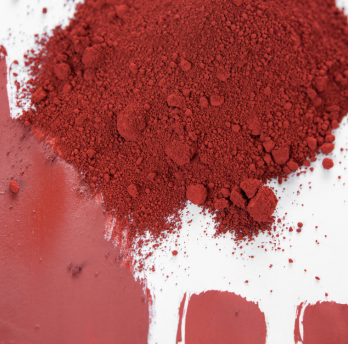

What are Iron Oxide Pigments
Iron oxide pigments are extensively used in diverse industries for their color stability, durability and resilience. These pigments have their own plethora of shades including, yellows, browns, reds and blacks, making them adaptable for applications like construction materials, cosmetics, plastics and coatings. The process of manufacturing iron oxide pigments involves different key stages that ensure consistent performance and quality. In this article, we will take a sneak peak how iron oxide pigments are manufactured, focusing on the various techniques and methods involved.
Terminologies
In the world of iron oxide pigments, nomenclatures can be practiced as an elementary thing based on the color formation. It is seen that some of the natural colors have nomenclatures that normally reflect the geographies where they initially procured.
In case of synthetic oxides, the industries experience that it is more than enough to talk about the plethora of respective pigment colors ranging within black, brown and yellow.
Most of the synthetic pigments can be differentiated according to the way they are made to their final formation. On the other hand, if we go by the investigation Bureau of this respective industry, they have bifurcated the synthetic reds into a unique nomenclature, which is an oxide derived by scorching of iron sulphate (in other terms as copperas).
In terms of natural oxides, a plethora of nomenclatures has been brought to terms to materials derived from discrete sources. An effective sample case is that of Spanish red, emanated from the organic red of certain attributes from Spain. A wide variety of natural oxides having unique names are no longer bounded by the same; and are of only spasmodic significance. Therefore, the respective nomenclatures are enough to define contemporary oxide products such as-Vandyke brown, ocher, umber, sienna, brown and black.
A kaleidoscope through time: Iron Oxide Pigments
If we have a look in the late nineteenth century, these pigments were collected and derived wholly from natural resources, generally with minimal tweakings other than physical ablution. In some scenarios, roasting or scorching was also implemented. However, in the first phase of the twentieth century, chemical methodologies were cultured for synthetic fabrication of profit-oriented oxides. This methodology offered enhanced constancy as well as attributes not attainable with natural oxides, and inevitably synthetics overrides natural substances for different applications.
Fast forward to current era, the iron oxide pigment industry generates a blend of synthetic oxides furnished with a range of parameters, appended with a variety of natural oxides coveted because of their affordability or uniqueness of color.
This industrial realm is mellow, with products keeping up with commercial uses according to materialistic and chemical attributes, formidable among which are nontoxicity and solidity. Due to the abundance and inexpensiveness, iron oxide is responsible for one of the greatest fraternities of colored inorganic pigments. This industry experiences that synthetic pigments, often derived from scrap or as a byproduct of other businesses, are now the greater part of the iron oxide industry.
Let’s go through the current production methodologies of iron oxide pigments
Applications of Iron Oxide Pigments
Iron oxide pigments are used in a plethora of industries due to their appealing color, resistance to fading and stability. Some of the prominent applications include: